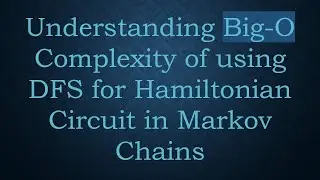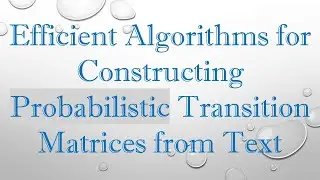Grid Background Implementation with DDA and Bresenham in Qt5
Learn how to create a grid background and draw graphs using DDA and Bresenham algorithms in Qt5, with insights into C++ and graphics programming.
---
Disclaimer/Disclosure - Portions of this content were created using Generative AI tools, which may result in inaccuracies or misleading information in the video. Please keep this in mind before making any decisions or taking any actions based on the content. If you have any concerns, don't hesitate to leave a comment. Thanks.
---
Creating graphics in a software application can significantly enhance user interactivity and visualization. When you're working with Qt5, a popular framework for creating cross-platform applications, you have access to a powerful set of tools for graphics and user interface design. This guide will discuss how to create a grid background and draw graphs using two fundamental algorithms: DDA (Digital Differential Analyzer) and Bresenham's line algorithm.
Implementing a Grid Background
To begin, creating a grid background is crucial when dealing with graphic applications or when you need a reference for placing objects. Grid backgrounds not only enhance the visual appeal but also provide a structured layout for further graphical representations.
Here's a basic approach to generating a grid background in Qt5 using C++:
Define the Grid Parameters: Set the width, height, and spacing of the grid lines. The spacing will determine the distance between each horizontal and vertical line.
Use QPainter: Leverage the QPainter class to draw lines within a QWidget or QGraphicsView. QPainter provides effective methods to handle drawing on various surfaces.
Draw the Grid: Loop through the defined parameters to draw horizontal and vertical lines.
[[See Video to Reveal this Text or Code Snippet]]
Drawing Graphs with DDA and Bresenham Algorithm
Once the grid is in place, you can add graphs using the DDA and Bresenham algorithms. Each has its advantages, mainly dealing with efficiency and accuracy in rendering lines.
DDA Algorithm
The DDA algorithm is a simple line generation algorithm that interpolates points between the start and end vector, incrementing by the smallest step value.
Efficiency: It is more efficient than the directly calculating line equations.
Implementation:
[[See Video to Reveal this Text or Code Snippet]]
Bresenham's Line Algorithm
Bresenham's algorithm is renowned for its superb performance in rendering lines with integer-based arithmetic, eliminating the need for floating-point calculations.
Accuracy: Offers more precise control over pixel rendering.
Implementation:
[[See Video to Reveal this Text or Code Snippet]]
Conclusion
Implementing a grid background and graph plotting using DDA and Bresenham's algorithms in Qt5 can elevate the level of interaction within your application. These algorithms offer robust solutions for rendering precise graphics with efficiency and accuracy. Integrating these within your Qt applications can provide a solid foundation for developing complex graphic systems.
Whether you're a seasoned developer or new to graphics programming, leveraging these algorithms with Qt5 can enhance the visual components of your applications and provide clearer data representation through a structured and appealing aesthetic.































